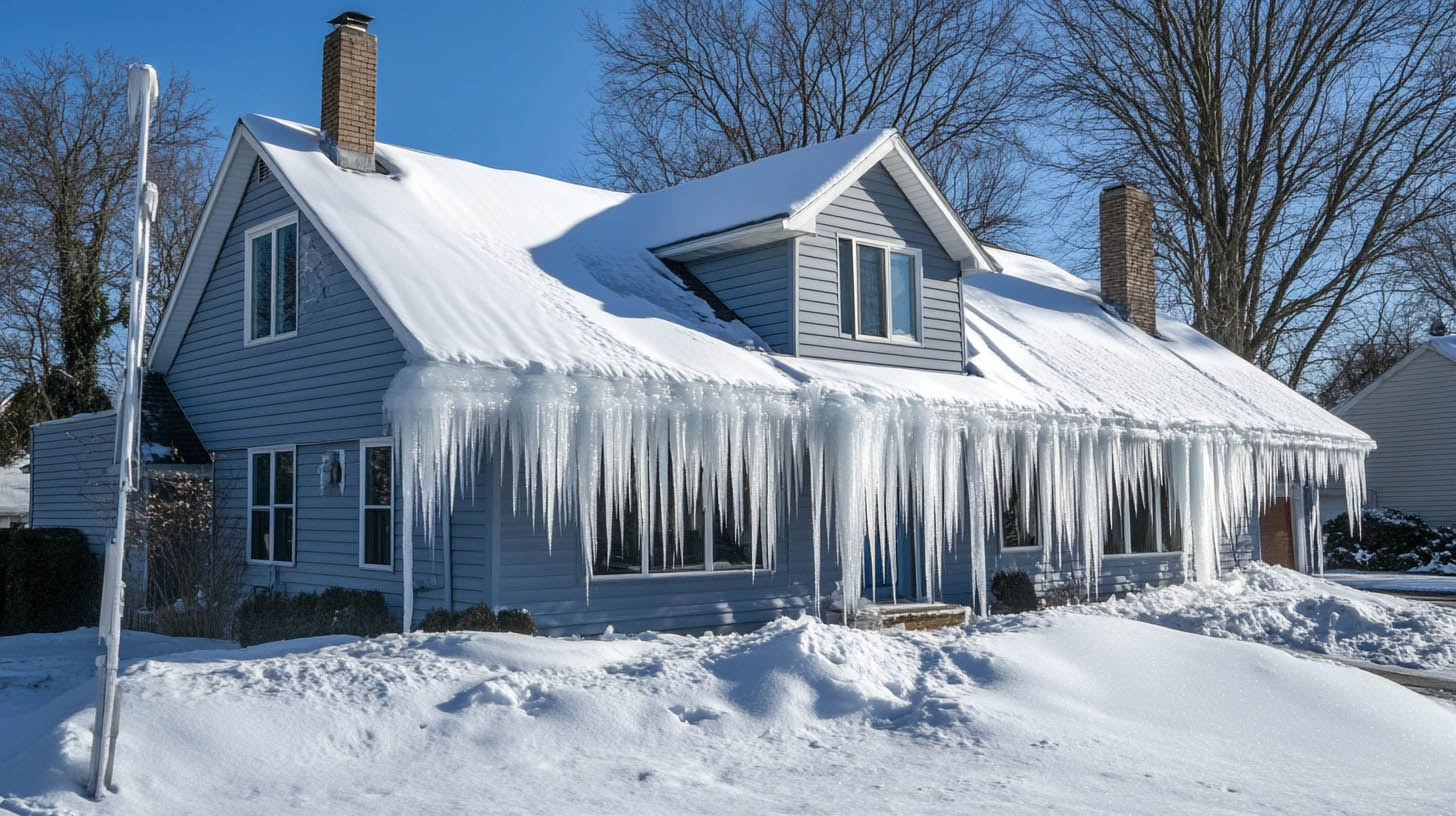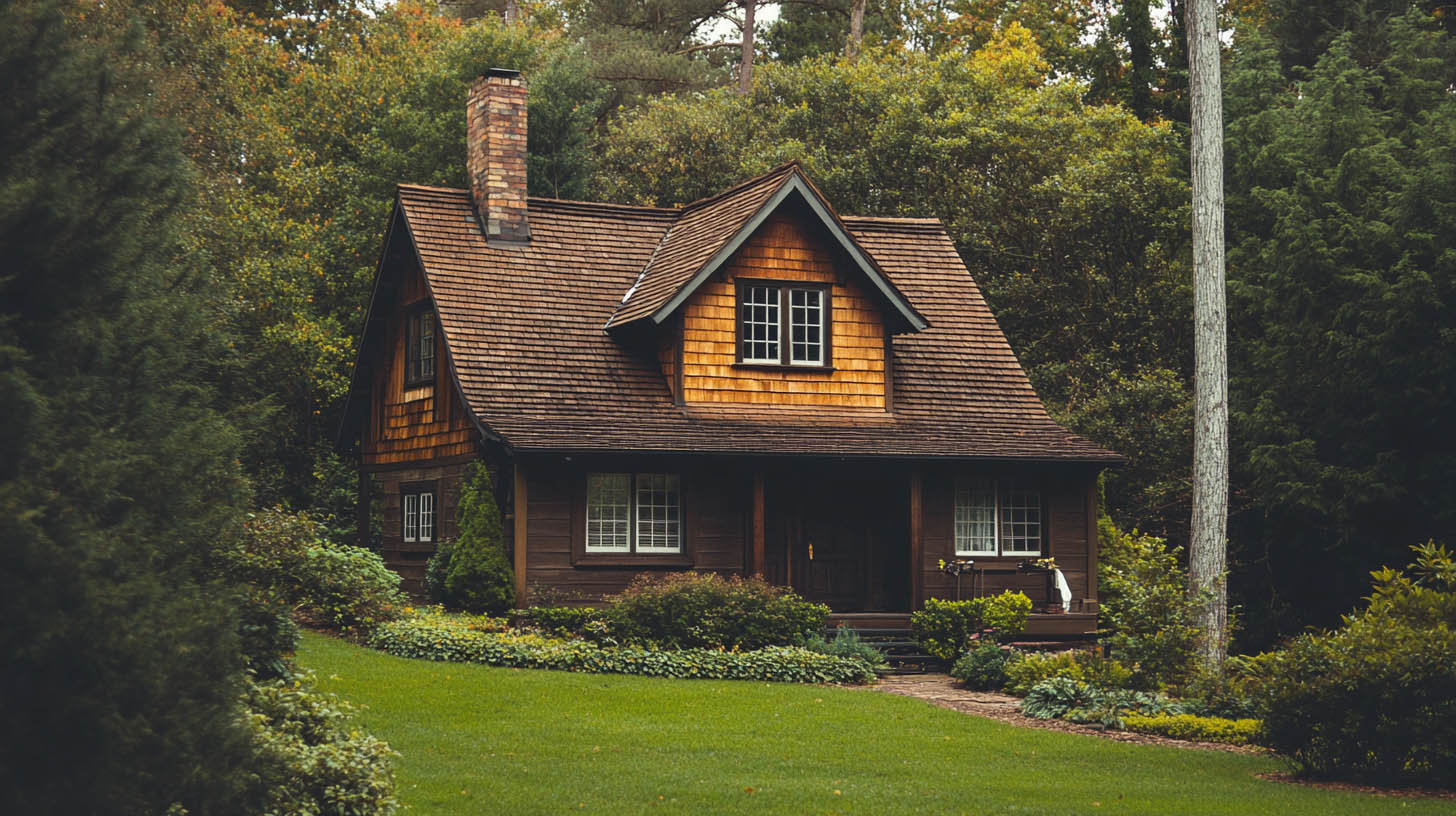
Ice Dams: What They Are and Why They’re Dangerous
While Stephenville, TX may not experience prolonged freezing winters like northern states, Texas weather can still surprise us with sudden cold snaps, icy mornings, and occasional snowfalls. When these unexpected freezes happen, one often-overlooked roofing issue can emerge: ice dams. Even a brief cold spell can create the perfect conditions for an ice dam to form — and the damage it causes can be significant.
At DT Roofing, we educate homeowners on how to recognize, prevent, and address the hidden dangers of ice dams. Though they might sound harmless, these ice buildups along your roof’s edge can silently cause roof leaks, water damage, and expensive repairs if left unchecked.
What Is an Ice Dam?
An ice dam is a ridge of ice that forms along the lower edge of a sloped roof, usually near the eaves. It develops when heat from inside your attic rises and melts the snow or ice on your upper roof surface. That water then flows down toward the colder, unheated edges of the roof where it refreezes. Over time, this repeated cycle of melting and refreezing creates a buildup of ice.
The problem? As the dam grows, it blocks the natural path of water runoff. Instead of flowing off the roof, the water backs up behind the dam and can seep under shingles and into your home’s structure.
Why Ice Dams Are Dangerous
1. Water Leaks and Interior Damage
The most immediate threat posed by ice dams is water intrusion. Water that backs up under your shingles can find its way into the roof deck, attic insulation, and even the ceilings and walls of your home. This often results in unsightly stains, bubbling paint, warped drywall, and in severe cases, structural wood rot.
Since this type of leak originates above the roofline, it’s harder to detect until the damage is well underway — especially if it occurs in an attic or unoccupied space.
2. Mold and Mildew Growth
Moisture from an undetected ice dam leak creates a perfect environment for mold and mildew to thrive. Not only does mold damage wood and insulation, but it also poses serious health risks, especially to individuals with allergies, asthma, or compromised immune systems.
3. Compromised Insulation Efficiency
Once water saturates attic insulation, its thermal resistance (R-value) drops significantly. This reduces your home’s energy efficiency and makes it harder to maintain a consistent indoor temperature. In Stephenville’s variable climate, that can mean increased heating and cooling costs all year round.
4. Shingle and Gutter Damage
Ice dams are heavy. As they build up, they put stress on shingles, underlayment, and even your gutters. The repeated freeze-thaw cycle can cause shingles to crack or loosen. Gutters may warp, pull away from the house, or detach entirely under the weight of the ice.
What Causes Ice Dams?
Several factors contribute to ice dam formation, including:
- Inadequate attic insulation – allows heat to escape and melt snow unevenly.
- Poor ventilation – causes warm air to accumulate near the roof deck, leading to premature melting.
- Blocked roof vents or soffits – prevent cold air from circulating properly.
- Clogged gutters – slow down or stop water flow, increasing the chance of refreezing at the eaves.
Even a well-constructed roof can fall victim to an ice dam if its ventilation and insulation systems aren’t functioning correctly.
How to Prevent Ice Dams
The good news is that ice dams are largely preventable. By focusing on proactive maintenance and proper home design, you can drastically reduce the risk of winter roof issues.
Improve Attic Insulation
Upgrading your attic insulation keeps warm air where it belongs — inside your living space. This reduces uneven roof temperatures and slows down snow melt. A properly insulated attic also helps lower energy costs during both winter and summer.
Enhance Roof Ventilation
Balanced ventilation allows cold outside air to circulate through the attic, keeping the underside of the roof closer to the ambient temperature. Ridge vents, soffit vents, and gable vents work together to move air efficiently and prevent hot spots that contribute to ice damming.
Seal Attic Air Leaks
Gaps around plumbing pipes, light fixtures, attic access points, and vents can leak warm air into your attic space. Sealing these leaks with caulk or spray foam insulation can significantly reduce heat transfer and improve overall roof performance.
Keep Gutters and Downspouts Clear
Regular gutter cleaning helps ensure that water flows off your roof as it should. Clogged or frozen gutters are one of the most common contributors to ice dam formation. Installing gutter guards and heat cables may also help in particularly shaded or vulnerable areas.
What to Do If You Spot an Ice Dam
If you suspect an ice dam has formed on your roof, don’t try to chip away at it with a shovel or hammer. Doing so could damage shingles, loosen flashing, or cause injury.
Instead, take these safer steps:
- Use a roof rake to gently remove snow from the roof edge while standing safely on the ground.
- Place calcium chloride (not rock salt) in a nylon stocking and lay it across the dam to encourage melting.
- Contact a roofing professional for an inspection and damage assessment.
At DT Roofing, we offer fast response times and expert evaluations when winter weather causes problems. We’ll determine whether your roof has suffered hidden damage, help you repair it, and advise on long-term solutions to prevent future issues.
Don’t Underestimate a Small Freeze
It only takes a few nights of freezing temperatures and trapped moisture to create an ice dam capable of damaging your home. In areas like Stephenville, where freezes are rare but sudden, it’s easy to be caught off guard. That’s why year-round roof maintenance, proper insulation, and ventilation are essential — not just for preventing ice dams, but for protecting your roof through all seasons.
Read also our blog: The Key Advantages of Routine Roof Cleaning









